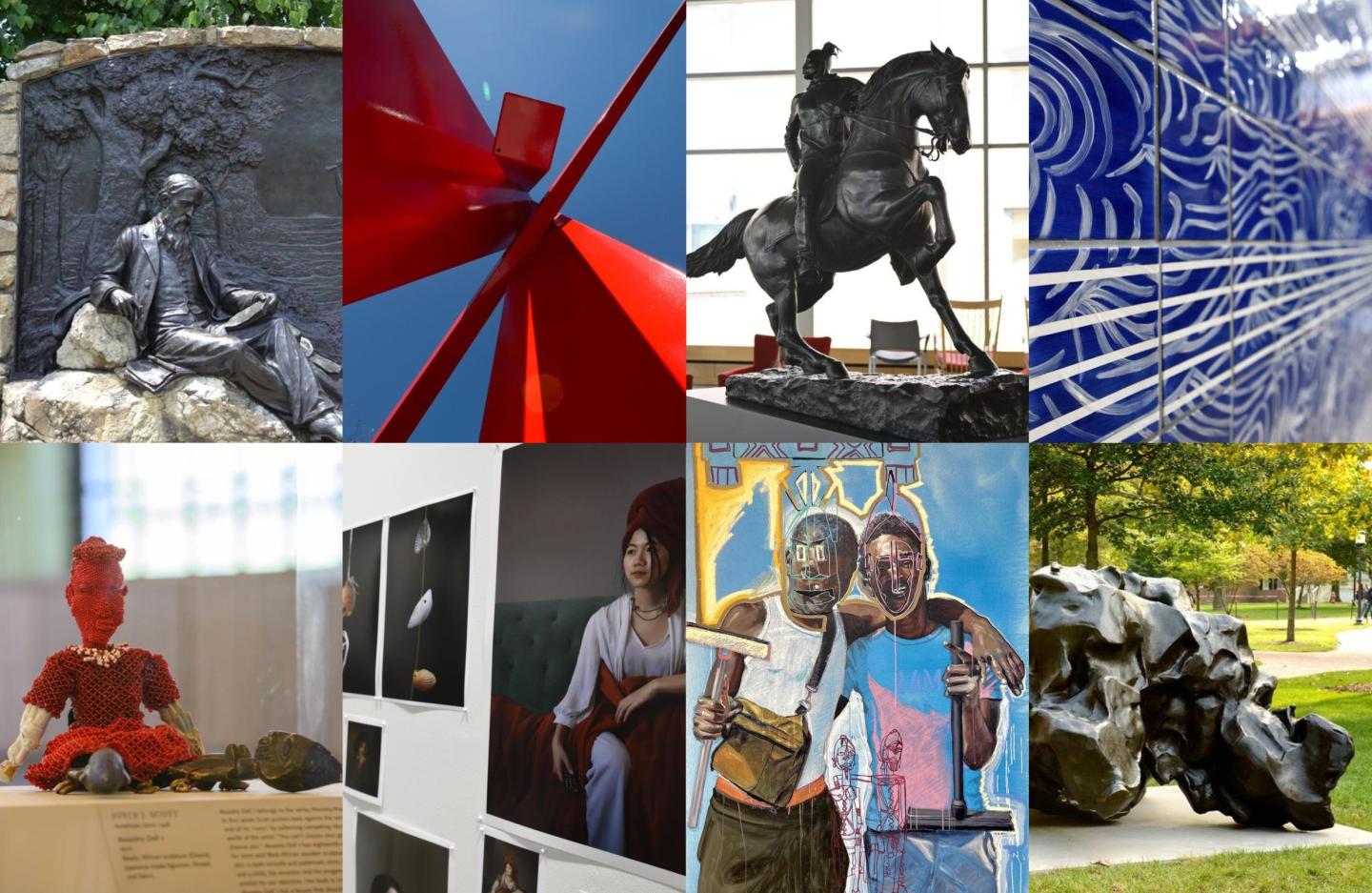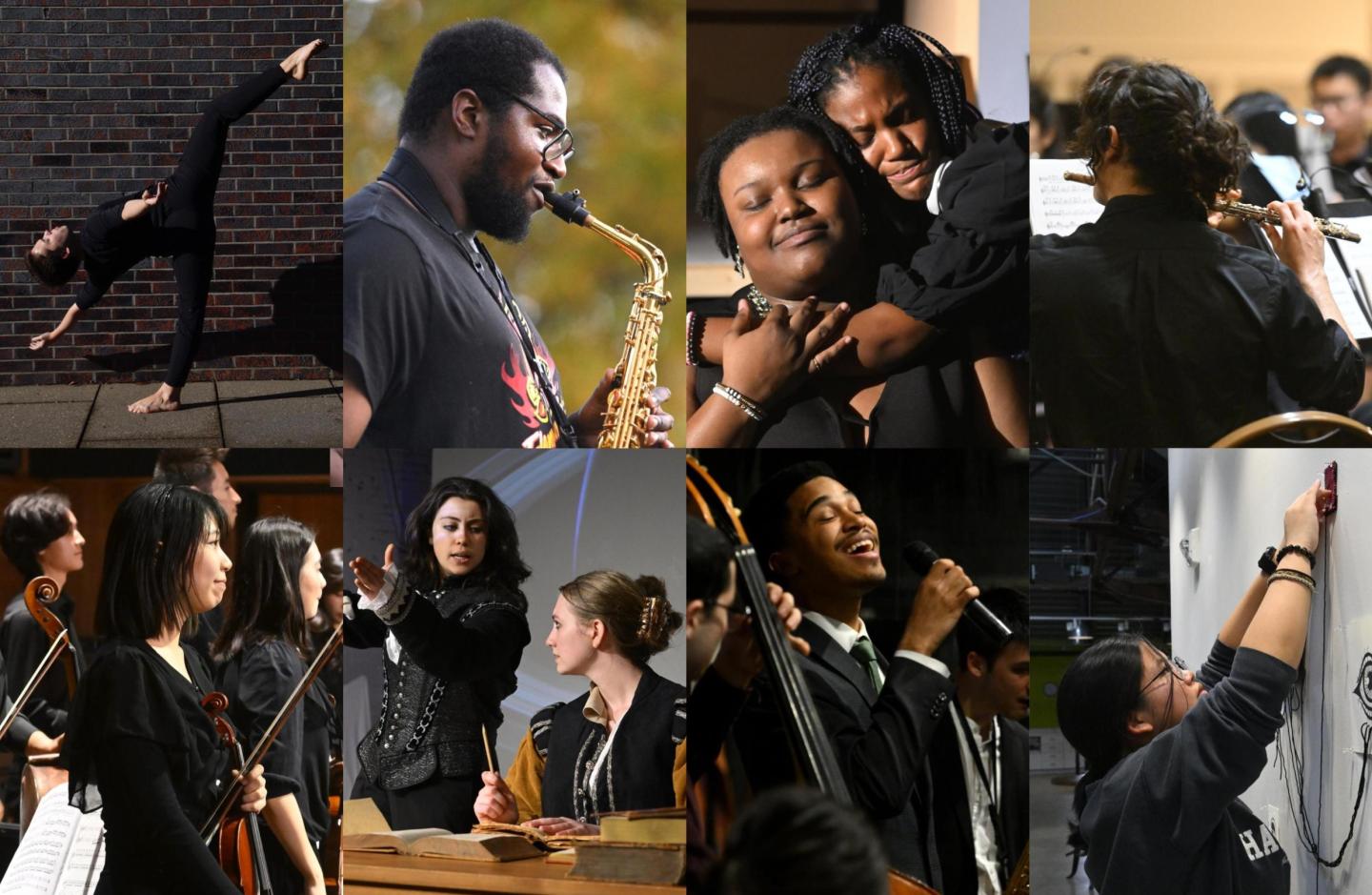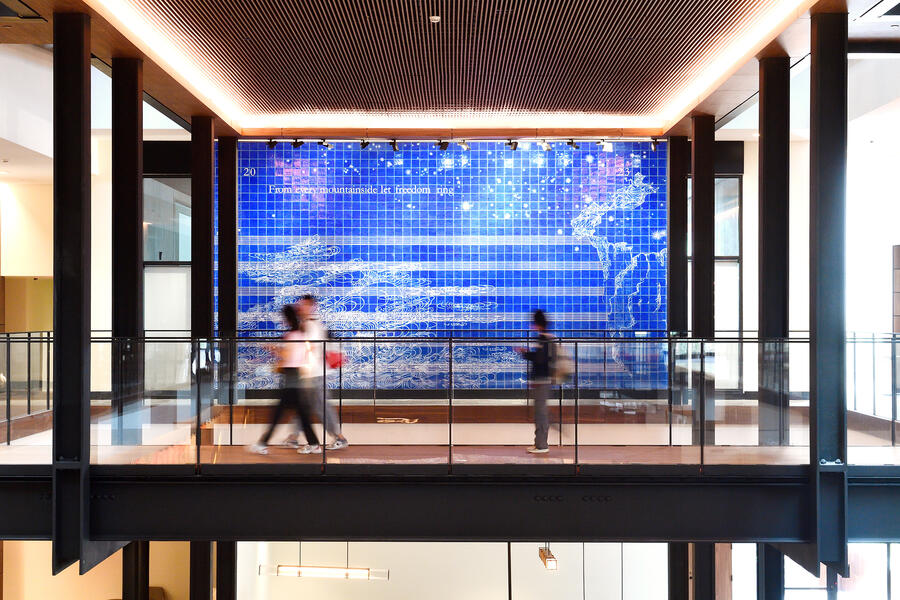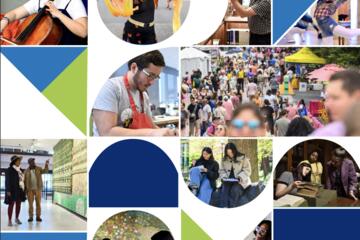- Name
- Johns Hopkins Media Relations
- jhunews@jhu.edu
- Office phone
- 443-997-9009
A vision for incorporating the arts into celebrations of Johns Hopkins University's 150th year. An artist-in-residence program to attract prominent artists or art-related scholars to campus. A comprehensive online resource showcasing all of the university's arts programs and assets. These are among the many ideas proposed in a bold and wide-ranging report developed as part of a major initiative to elevate and enhance the arts across the university.
Johns Hopkins has a distinguished history of commitment and achievement in the arts, including being home to a world-renowned conservatory and more than 200 works of public art. But it has lacked a comprehensive vision and strategy shaping its approach to the arts, one that fully embraces its rich and diverse array of cultural and artistic resources, programming, and expertise.
Since the summer of 2024, developing and articulating that vision has been the work of the Taskforce on the Arts, a 20-member group charged by JHU Provost Ray Jayawardhana with identifying areas of opportunity in the arts and developing specific, actionable recommendations. Daniel H. Weiss was named chair of the taskforce and serves as senior advisor to the provost for the arts. Weiss is also the Homewood Professor of the Humanities at Johns Hopkins and president emeritus of the Metropolitan Museum of Art in New York. After assessing the university's many arts-related assets, receiving input from individuals across the JHU community, and drawing inspiration from the arts-related successes of peer institutions, the taskforce has produced a comprehensive report featuring 25 top-line recommendations.
The report supports several of the goals of the university's Ten for One strategic vision: invigorating a sense of community and shared on-campus experience; embarking on major, collaborative cross-university initiatives; and new partnerships and programs that deepen the university's connection to Baltimore and other communities.
"Like the arts, our university is fundamentally committed to curiosity, creativity, and the free exploration of ideas," JHU President Ron Daniels says. "The Taskforce on the Arts embodies Johns Hopkins' commitment to the arts as vital contributors to that spirit of innovation and inquiry. I am grateful to the taskforce chair, Dan Weiss, and all its members and thrilled that its recommendations will help us bolster our historic strengths in the arts and embed them even more deeply across our One University."
The vision laid out by the taskforce in the new report is ambitious and expansive, with a range of ideas designed to weave the arts into the fabric of the university's identity. It envisions a Hopkins where all students have meaningful encounters with the arts—as creators, scholars, collaborators, or audience members—and where the university's mission of teaching, research, and practice is informed, inspired, and enriched by the arts.
The report's recommendations are organized into four groups:
- Engaging our community: Inspiring students, faculty, and staff through innovative arts initiatives and programs.
- Strengthening our resources: Expanding access to the arts as a powerful medium for teaching, learning, and exploration.
- Fostering partnerships and collaboration: Deepening engagement in the arts with Baltimore and other communities the university calls home.
- Sustaining our progress: Ensuring ongoing support, visibility, and coordination of the university's commitment to the arts as a fully integrated and essential part of the Hopkins enterprise.

Image credit: Johns Hopkins University
"The Taskforce on the Arts has articulated a compelling and unifying vision for the future of the arts at Hopkins, one that embraces the arts as a vital force for creativity and connection and builds a more intentional, vibrant, and integrated arts landscape across the university," Jayawardhana says. "As Hopkins enters its 150th year, this vision affirms the essential role of the arts in amplifying and energizing every part of our mission—enriching our teaching, catalyzing new avenues for research, and deepening our service to Baltimore and beyond."
Some recommendations are expected to be implemented during the 2025-26 academic year—including efforts to elevate the arts as part of the celebrations of the university's 150th year. The sesquicentennial celebrations led by the Johns Hopkins University Sesquicentennial Office with support from university leadership, will include a mix of on-campus, regional, and virtual events to include performances and other events and programs foregrounding the university's creativity and artistic expression.
Other recommendations are expected to be implemented over the next three to five years, according to Weiss. This includes evaluating the feasibility of an Arts Innovation Lab to foster collaborations between local artists and members of the Hopkins community, an expansion of digital collections, and the exploration of an arts pass program to give Hopkins students access to local performances and events. Weiss will oversee the implementation of these ideas as head of the new Office of the Arts in the Office of the Provost.
The report also includes ideas for how the university might better leverage existing arts resources, from the talents of Peabody faculty and students to its expansive collection of cultural objects and rare books to the hundreds of pieces of public art found across JHU's campuses and buildings. It also advocates for the cultivation of closer partnerships with some of the region's leading arts destinations and organizations, including the Baltimore Museum of Art, the Baltimore Symphony Orchestra, and the National Gallery of Art in Washington, D.C.
"Throughout its history, Johns Hopkins has maintained a deep commitment to the arts and humanities," Weiss says. "The work of the taskforce builds on that commitment to outline a strategic and synergistic vision that strengthens our engagement with arts across all divisions of the university.
"In developing our recommendations, we seek to inspire our community's creative aspirations, cultivate deeper collaboration across all Hopkins divisions and campuses, and strengthen our ties with Baltimore and with the diverse communities we engage around the world. By weaving the arts more intentionally into the fabric of our institution, we hope to drive meaningful progress toward a more vibrant, connected, creative Hopkins—enriching our programs, offerings, and identity in powerful new ways."
If you have questions or suggestions regarding the Taskforce on the Arts report and its recommendations, please contact officeofthearts@jh.edu.

Image credit: Johns Hopkins University
Posted in Arts+Culture, University News
Tagged fine arts










